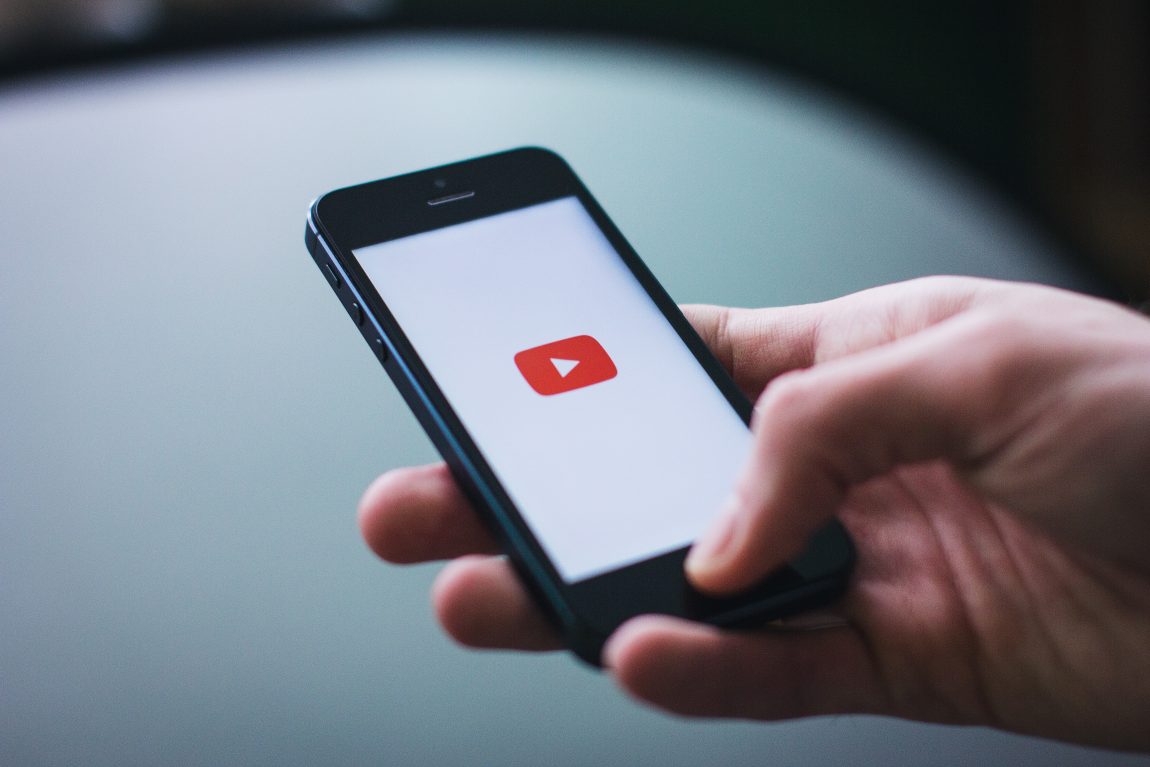Live Video for B2B: Why It’s Time to Get on Board
by Emily Swet
 It’s official. Now that YouTube has finally joined it’s compadres and has begun offering live video, it’s time to start thinking about how your B2B brand can leverage it. If you haven’t started using the live video features already available from Instagram, Snapchat, Facebook Live or Periscope, it’s not too late to start. But why should you incorporate live video for B2B into your marketing strategy? And more importantly, what kind of content do you need?
It’s official. Now that YouTube has finally joined it’s compadres and has begun offering live video, it’s time to start thinking about how your B2B brand can leverage it. If you haven’t started using the live video features already available from Instagram, Snapchat, Facebook Live or Periscope, it’s not too late to start. But why should you incorporate live video for B2B into your marketing strategy? And more importantly, what kind of content do you need?
Think Big Fish, Small Pond.
When it comes to live video, B2C brands have robustly adopted this tool as part of their strategy. B2B brands, however, have been historically slow on the uptake. Translation? Your brand has an opportunity to stand out against your competitors – the sooner, the better. If adding yet another social media tactic to your brand strategy seems overwhelming, there’s something you should keep in mind. This lull won’t last forever. The first B2B brands to begin using live video will reap the biggest gains on reach, engagement, and return. Fortunately, adding live video is nowhere near as daunting as it sounds.
With live video, your followers can comment and ask questions in real time. And live testimonials both build trust and increase your conversions. Watching live video with other consumers creates a sense of community amongst your audience that they associate with your brand. The in-the-moment nature of live video encourages feedback in real time, and can be compellingly shareable. And because live video is off-the-cuff, your B2B stands to gain a level of familiarity with your audience that’s hard to attain through more traditional marketing tactics.
Lights, Smartphone, Action.
The good news is live video is easy for any marketing department to produce: all you need is a decent smartphone, and you’re ready to roll. And there’s no shortage of ideas for live video for your B2B brand. Still need some inspiration? Here are a few to get the ball rolling:
- Ask The Expert: host an interactive live interview with one of your company’s experts and open the floor for a live Q&A.
- Up Your Customer Service: livestream a video dedicated solely to customer assistance and quality assurance.
- The Big Reveal: build some buzz for a new product or service with a live video revealing your new offering.
- Testify: interview a satisfied customer and get a live testimonial.
- Take Your Clients With You: live stream from major industry events and conferences.
- Go Behind the Scenes: show your customers your company, introduce them to your employees, and give your B2B some life.
Live video may seem daunting at first, but with a little practice, it will become as easy as any other tool in your social arsenal. And with live video taking increasing ownership of internet traffic, the time to start using it is now.
Continue ReadingB2B Monday Myth: My Email Blast Should Be a Product Promo Machine
by MGB2B
The Myth: My Email Blast Should Be a Product Promo Machine
The Truth: Email Should Be Used to Distribute Relevant Content (with Some Product Promo Mixed In)
How many emails do you delete a day? Perhaps you don’t even take a peek before deleting. A barrage of daily promotions often ends up in the trash folder. The fact is, people don’t want to be bombarded with B2B product promotions in their already-crammed inboxes. Audiences will get email fatigue if you send them product promotions every day. So how do B2B companies successfully keep their prospects interested? Answer: Engaging content.
Email blasts can be a powerful tool, especially since the lists of contacts you’ve created are people who have willingly supplied you with their information. You’ve already captured them in your marketing funnel: they know of your company and your products, and have probably expressed some interest or purchased in the past. They’ve subscribed, so you’ve already won half the battle. But how do you create emails people actually want to open? The goal is to regularly send relevant insights via email, to provide information and position yourself as a trusted brand in the minds of your prospects.
Newsletters Are Great, But You Can Do More
According to the Content Marketing Institute, 77% of B2B content marketers are using email newsletters to update their audiences. These scheduled blasts are informative, often contain links to blog posts and other interesting pieces of content, and can be easily sent out to your audiences en masse. But you can go further, especially with tall of the automated email programs out there today.
B2B prospects are especially hungry for informative content that is relevant to their list. And going beyond the newsletter enables you to segment, and target by industry and interest. You are the experts in your field. All you have to do is own it. One of your engineers could write an article on using a product, to help clients who have already purchased. A manager could create a blog post with his take on industry trends. No matter where your client is in the buying cycle, there is information that they want. It’s up to you to create and deliver it.
Segment Your Audiences, Then Tailor
In another B2B Monday Myth, we busted the idea that all audiences are the same. As it turns out, not all audiences are created equal, and content must be personalized for each one. Email is one of the easiest channels to distribute personalized content. Instead of sending out one email blast to everyone on your list, you should segment your contacts. This could be based on vertical/industry, phase of the buying cycle, position in the marketing funnel, or even the subscriber’s job title. A sales representative is interested in different content than a software engineer. Those in the medical industry have different preferences than those working with consumer products. The long-time buyer wants different information than the prospect who expressed interest in your capabilities. Keeping your segments in mind when tailoring different emails will help you target more successfully, and wield better conversion rates.
It’s About Them, Not You
You’ve got your segments and have created emails that they would find insightful. Now, shift your focus off yourself, and turn it to the subscriber. Many companies get caught up in getting their message across and their product sold immediately. But you can’t force people to buy products by sending them dozens of emails all the time. By distributing relevant content, you will show you are trustworthy and establish yourself as an authority in your industry (and theirs). A good mix of relevant content and new product introductions can drive people to your website. Or it might put you at the top of the list the next time a prospect needs a job done. A little promotion tastefully thrown in is okay, but the content should be your primary focus.
While it’s easy for your company to fall into the trap of sending generic, promotional emails out to your entire contact list, start to go about crafting your emails more strategically. Tailoring your engaging content to relevant segments is a great place to start.
Continue ReadingHow B2B Brands Can Tackle Social Responsibility
by MGB2B
 Last week, we discussed whether corporate social responsibility is necessary for B2B brands and the many benefits your business can gain from it. Attracting better talent. Lowering costs. Improving your reputation. Even increasing profits. It’s clear that social involvement is crucial for B2B brands today. Follow these tips for B2B social responsibility to get your program started right:
Last week, we discussed whether corporate social responsibility is necessary for B2B brands and the many benefits your business can gain from it. Attracting better talent. Lowering costs. Improving your reputation. Even increasing profits. It’s clear that social involvement is crucial for B2B brands today. Follow these tips for B2B social responsibility to get your program started right:
Consider What Your Prospects Care About
Your marketing department may have some of the best information when it comes to the preferences of your prospects. There are many directions you can go when it comes to supporting social causes. You can center an entire campaign around a specific issue, or you can incorporate charitable actions into your business in other ways. You have to decide as a company what is the best approach to take. But it can only help to take into consideration what prospects value most. Find out what they care about, and if it aligns with your company goals, you’ve found your social responsibility focus.
Raise Awareness
To build your reputation, it takes more than making your current clients aware of your social efforts. Who else has stake in your company? Involving the community, shareholders, government, and other organizations can be an essential part of the process. It’s also important to play an active role in your local community. While thinking large-scale in your social efforts is good, it never hurts to participate in local events and support the community where your business resides. For small businesses, this may be the full extent of your CSR efforts, but the community help make your message go further.
Spread the Word on Social Media
Promoting your community involvement or charitable efforts on social media is key. If a regional office of your company is participating in community events, snap some photos and upload them to your social media channels. People will like to see your involvement and support in these local activities. And – even more importantly – it draws attention to the organization you’re helping.
Dedicate A Page On Your Website
While larger companies like Google can devote entire websites to their CSR efforts, you may want to consider a single landing page on your website. Many companies dedicate a page on their websites to “Community Involvement,” where they list their corporate social responsibility efforts or the organizations they partner with. This is an easy way to showcase your efforts. You can house your CSR stories here and drive people to the page through SEO and social media distribution.
Some may think corporate social responsibility is irrelevant for B2B brands. The truth is, prospects today want to work with companies that not only make good things, but do good things. What kind of good things has your B2B brand been doing lately?
Continue Reading